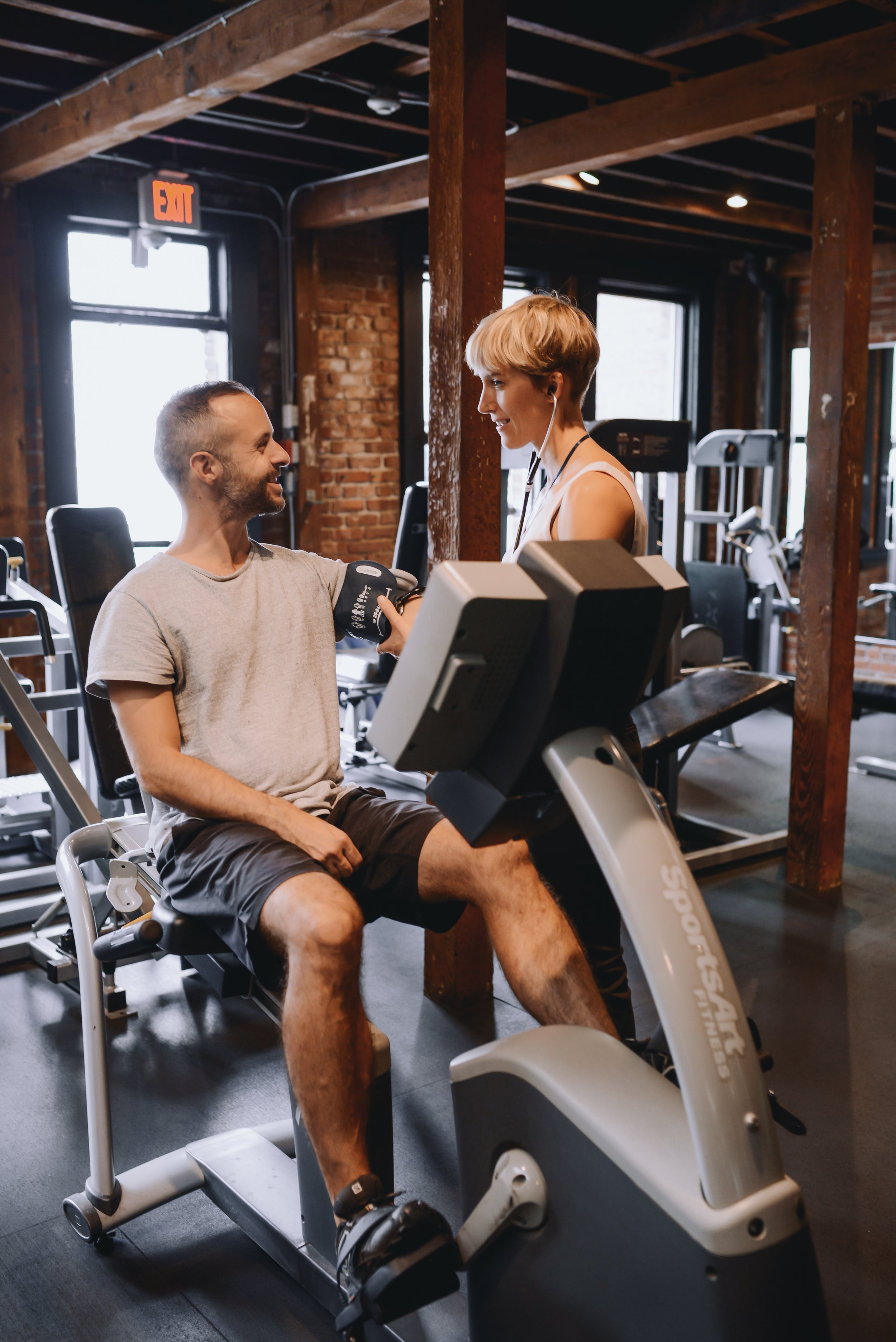Living with Cancer? 4 Reasons Exercise Should be a TOP Priority!
Rehab tools to find exercise as medicine
It’s amazing to think that only a few decades ago post-operative knee replacement patients were on bed rest for up to 30 days. Conversely, today’s rehab protocol promotes patients to start walking on DAY ONE. This shift represents a significant change in the understanding of how exercise effects the body; what we once thought was harmful actually promotes healing. We’ve come to understand that exercise can help regenerate tissues and create extensibility. Studies have shown that a month’s bed rest may reduce overall life expectancy and recent studies found an association between ‘sedentary time and risk of endometrial, colon and lung cancers (Patel et al)”.
In the world of pain science, we’ve come to learn that avoidance behaviour and rest in chronic pain, can lead to persistent pain and sensitization (Booth et al). Similarly, in concussion research, graded exercise treatments have shown to be very effective as opposed to the past protocol of sensory withdrawal. Hence, it should be of no surprise that science has more to tell us in other realms of medicine about how exercise and its timing, may be of benefit. Let’s take a deep dive into exercise as medicine…
Exercise Optimizes the Cancer Journey
Consider cancer, if you were to know someone undergoing chemotherapy or a stem cell transplant and they were looking fatigued; I think there would be the temptation to prescribe rest. Considering all that was mentioned above and after nearly a 250% increase in the amount of cancer and exercise randomized trials, research has been consolidated stating exercise optimizes the cancer journey! New safe exercise guidelines state that exercise is very effective in cancer prevention, symptom control and can improve longevity among cancer survivors (Patel et al). By following the cancer physio’s safe exercise guidelines on exercising at any stage of cancer, exercise can be medicine. See below, and have your top questions answered exercising safely with cancer.
Exercising Can Provide A Sense of Control
Specific doses of exercise have shows to impact cancer-related health outcomes, including quality of life, fatigue, anxiety, physical function and depressive symptoms. In terms of cancer prevention, there is strong evidence that physical activity lowers the risk of acquiring 6 cancer types (Patel et al). In animal studies, it was found that exercise combined with chemotherapy can impact tumour vascularity and is more effective than stand-alone chemotherapy; suggesting that exercise could increase drug treatment efficacy (Patel et al). The new cancer and exercise guidelines state that cancer patients should build slowly towards 150 minute/week of moderate aerobic exercise and two strength training sessions.
Exercise Can Make You Feel Better
As science continues to confirm that exercise is good for cancer patients; naturally there are many other questions. Can any cancer patient just go to the gym? When is clinician’s guidance and medical clearance needed (Campbell et al)? What about pain, joint stiffness, post-operative complications, radiation fibrosis and the many physical symptoms that make exercise difficult? See my blog post on exercising with cancer and your top questions answered. It will help you understand if you need medical clearance and when clinical guidance with exercise planning may be worthwhile.
Reach out if you have questions or concerns about resources in your community or if you want to connect further, we do offer cancer rehab tele-health and in clinic assessments. Last but not least; your final reason to get started today is the following:
Exercise Promotes Survivorship!
Let’s end on that powerful note.
As always, thank you for your interest in science and rehab.
Kindly,
The Cancer Physio
References
1. Cook, J L, and C R Purdam. “Is Tendon Pathology a Continuum? A Pathology Model to Explain the Clinical Presentation of Load-Induced Tendinopathy.” British Journal of Sports Medicine 43, no. 6 (2008): 409–16. https://doi.org/10.1136/bjsm.2008.051193.
2. Patel, Alpa V., Christine M. Friedenreich, Steven C. Moore, Sandra C. Hayes, Julie K. Silver, Kristin L. Campbell, Kerri Winters-Stone, et al. “American College of Sports Medicine Roundtable Report on Physical Activity, Sedentary Behavior, and Cancer Prevention and Control.” Medicine & Science in Sports & Exercise 51, no. 11 (2019): 2391–2402.https://doi.org/10.1249/mss.0000000000002117.
3. Booth, John, G. Lorimer Moseley, Marcus Schiltenwolf, Aidan Cashin, Michael Davies, and Markus Hübscher. “Exercise for Chronic Musculoskeletal Pain: A Biopsychosocial Approach.” Musculoskeletal Care 15, no. 4 (2017): 413–21. https://doi.org/10.1002/msc.1191.
4. Giza, C. C., J. S. Kutcher, S. Ashwal, J. Barth, T. S. D. Getchius, G. A. Gioia, G. S. Gronseth, et al. “Summary of Evidence-Based Guideline Update: Evaluation and Management of Concussion in Sports: Report of the Guideline Development Subcommittee of the American Academy of Neurology.” Neurology 80, no. 24 (2013): 2250–57.
5. Schmitz, Kathryn H., Anna M. Campbell, Martijn M. Stuiver, Bernardine M. Pinto, Anna L. Schwartz, G. Stephen Morris, Jennifer A. Ligibel, et al. “Exercise Is Medicine in Oncology: Engaging Clinicians to Help Patients Move through Cancer.” CA: A Cancer Journal for Clinicians 69, no. 6 (2019): 468–84. https://doi.org/10.3322/caac.21579.
6. Campbell, Kristin L., Kerri M. Winters-Stone, Joachim Wiskemann, Anne M. May, Anna L. Schwartz, Kerry S. Courneya, David S. Zucker, et al. “Exercise Guidelines for Cancer Survivors.” Medicine & Science in Sports & Exercise 51, no. 11 (November 2019): 2375–90. https://doi.org/10.1249/mss.0000000000002116.




